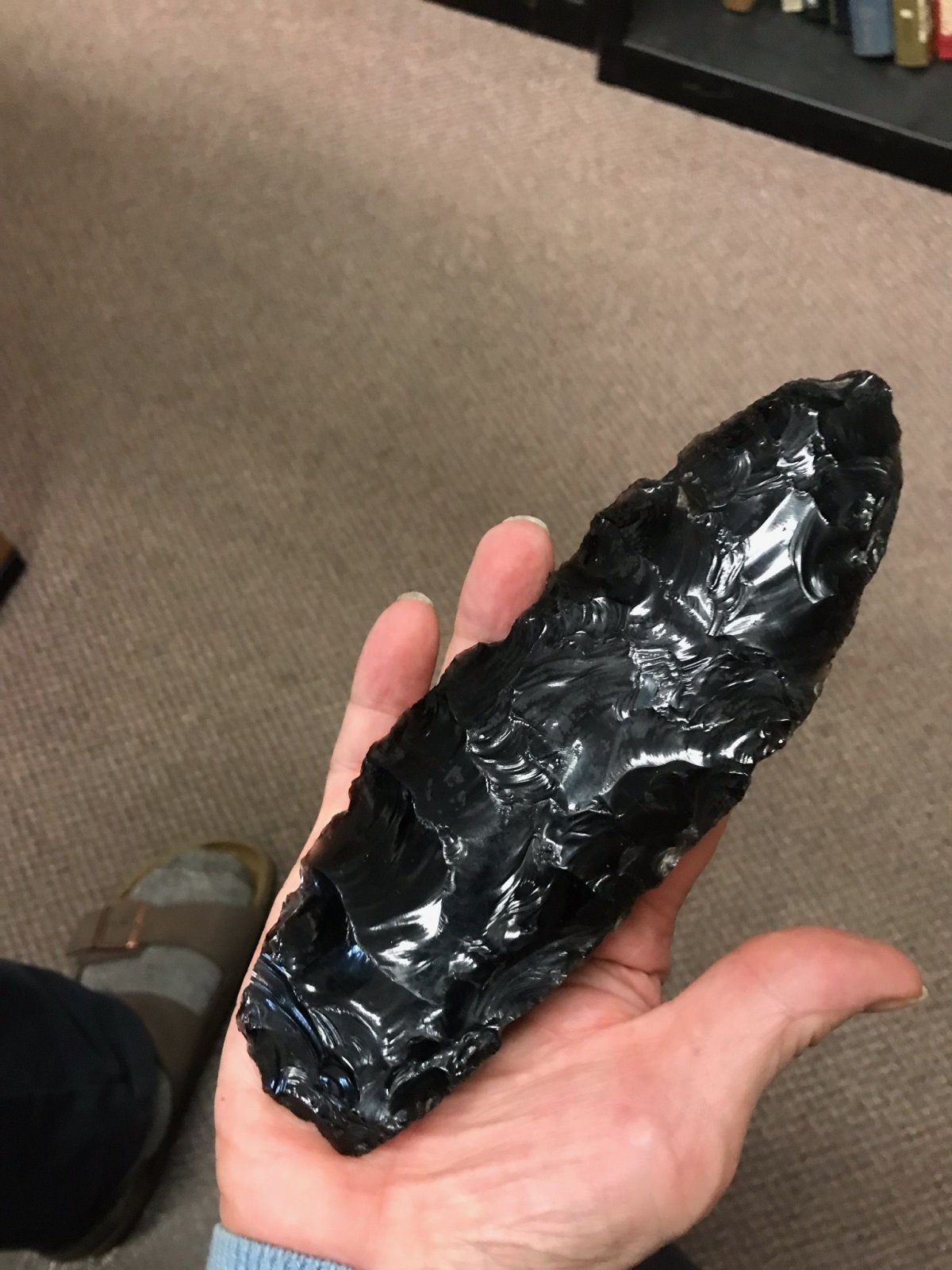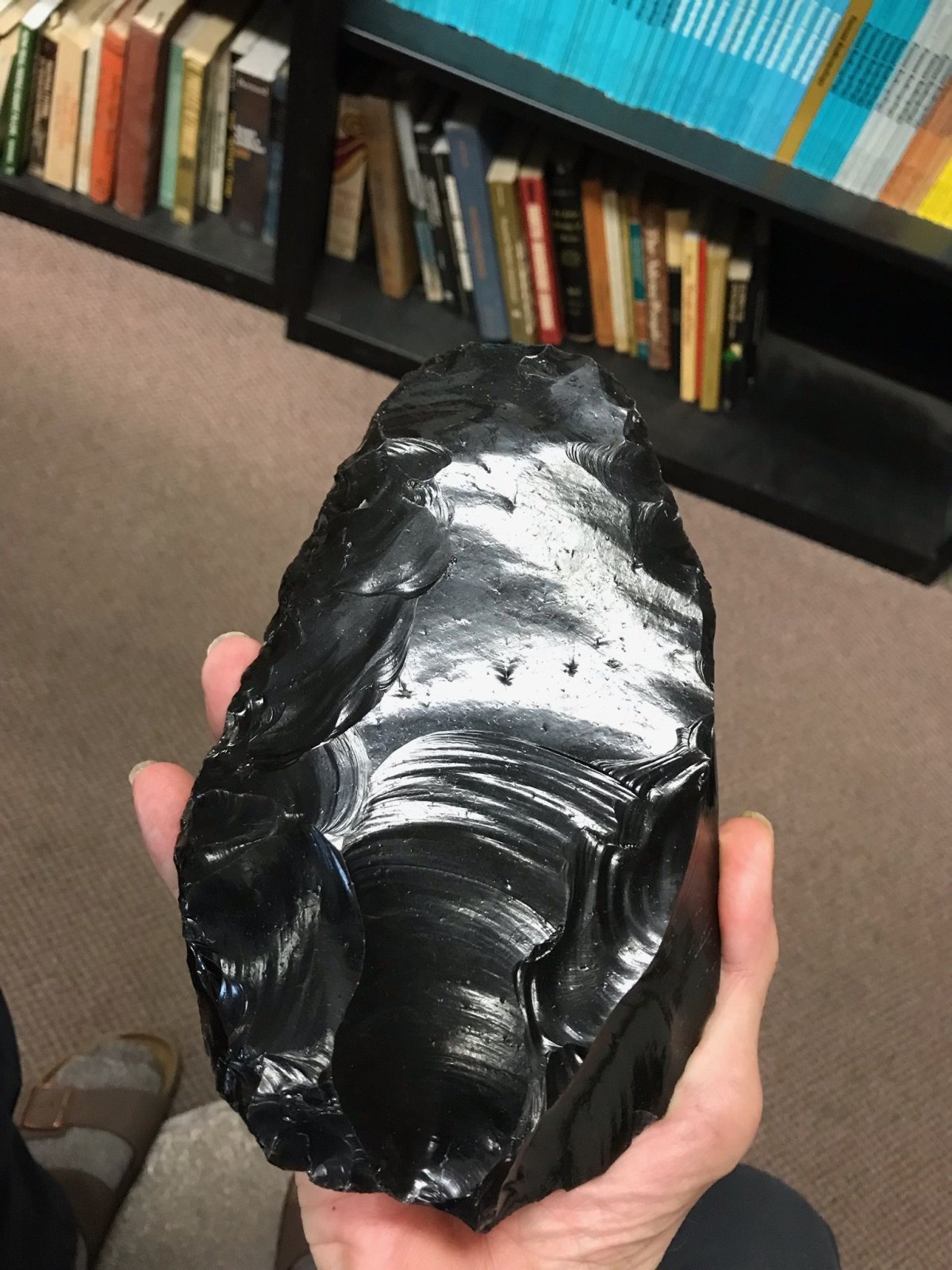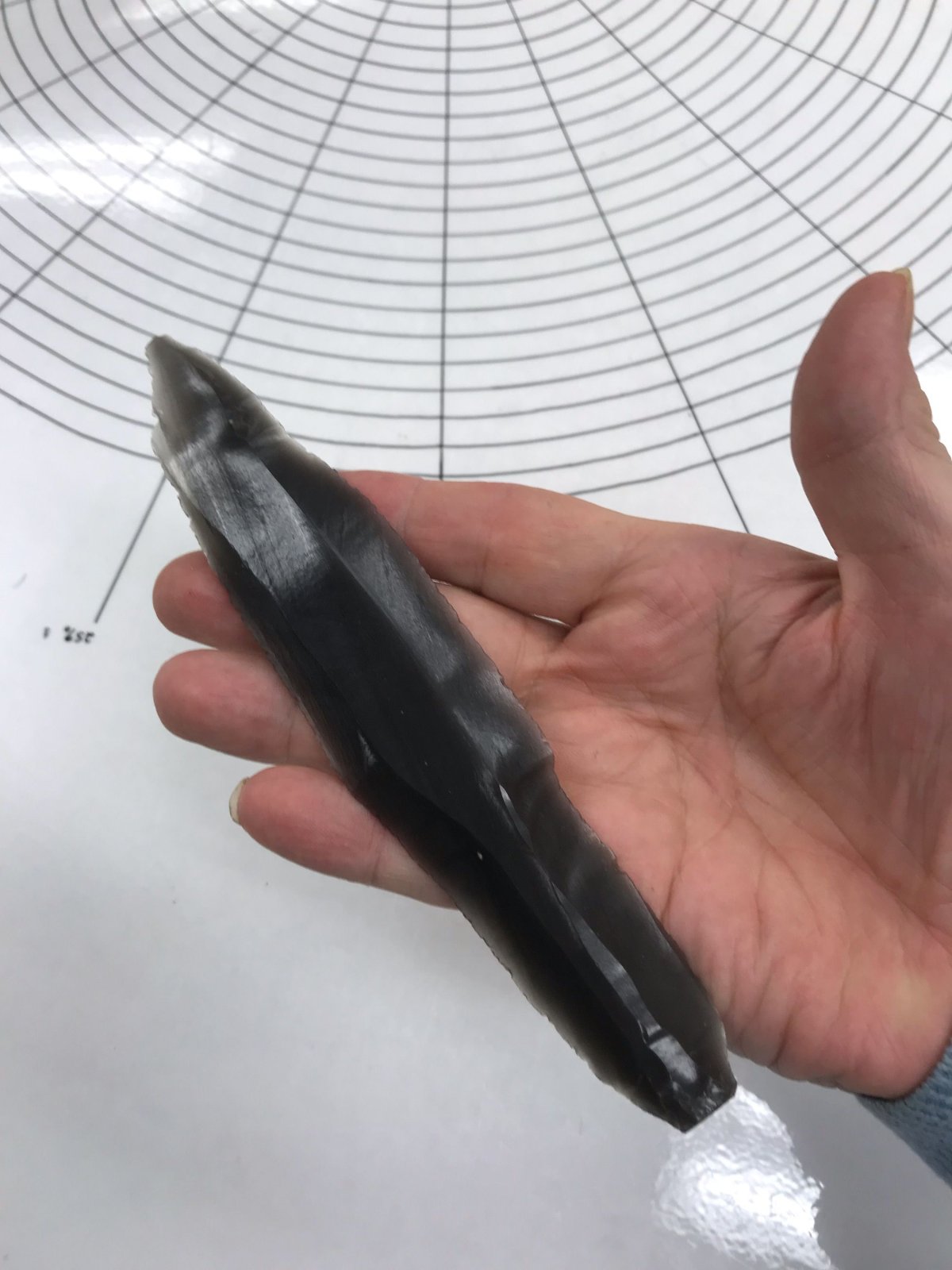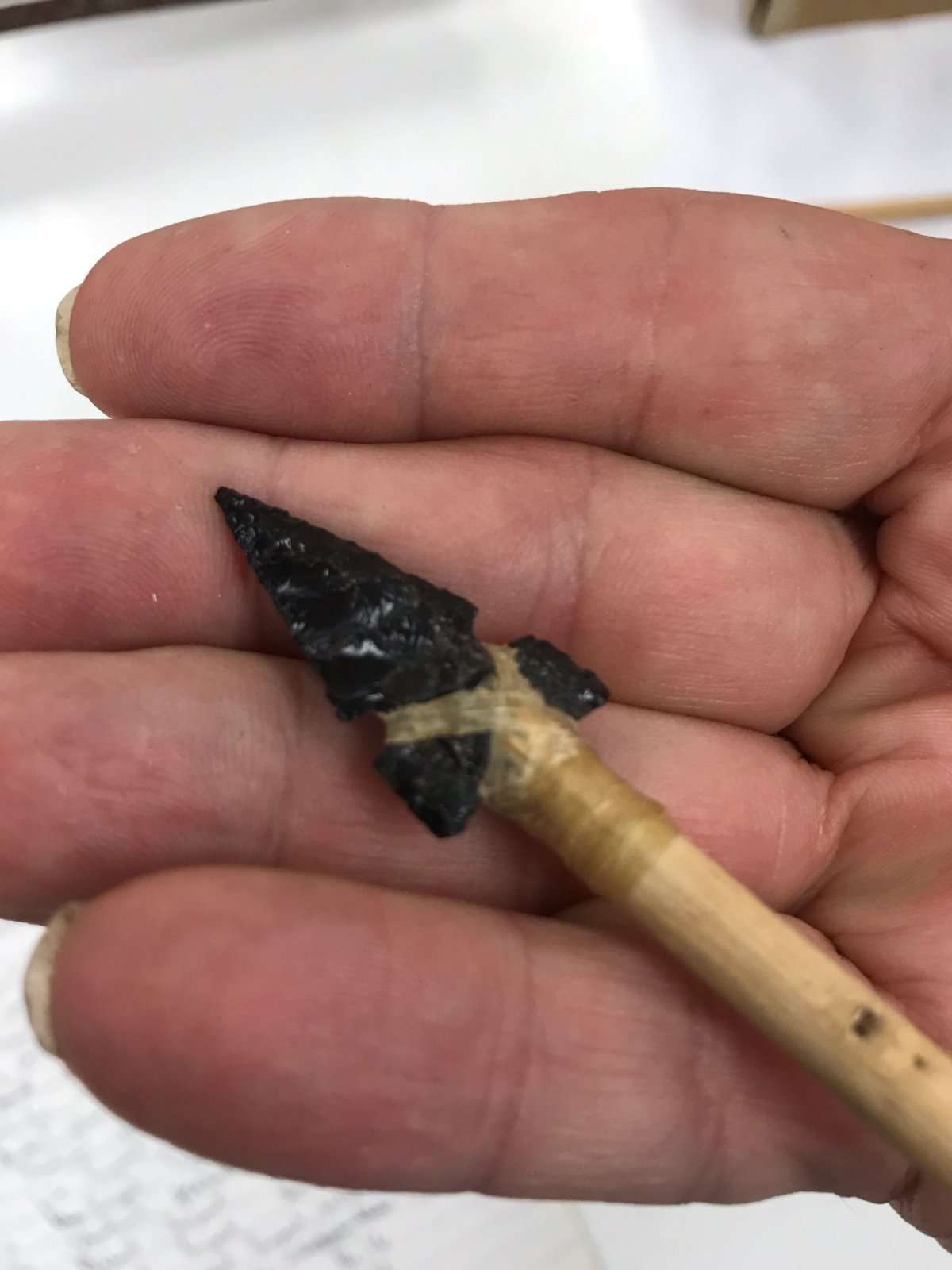Creating dragonglass weapons isn't easy. Archaeologist Ken Hirth describes how Jon Snow and Daenerys can prep for war with the Night King in Game of Thrones Season 8.
While dragonglass is mentioned in the first season of Game of Thrones, it's only when Samwell Tarly (John Bradley) and his Night's Watch compatriots Grenn (Mark Stanley) and Edd (Ben Crompton) find a cache of dragonglass—buried by the First Men and wrapped in a Night's Watch cloak—that we can begin to guess its true value. "It must be dragonglass," Tarly exclaims. "The Maesters call it obsidian."
Later, after escaping Craster's Keep with Gilly, Sam uses one of those blades to kill a White Walker, revealing to a new age the importance dragonglass had against the White Walkers thousands of years earlier, in a period of Westeros history known as the Long Night (soon to be the setting for a Game of Thrones prequel series).

Dragonglass kills wights and Night Walkers (as does Valyrian steel), making it indispensable in the war against the Night King and his army of the dead when Game of Thrones returns for its eighth and final season on April 14. With the alliance between Daenerys Targaryen (Emilia Clarke) and Aegon "Jon Snow" Targaryen (Kit Harington) secured, the dragonglass under Dragonstone will contribute to the war effort. But weaponizing all that obsidian isn't such a simple matter.
"It's a skilled trade," Dr. Ken Hirth, an archaeologist and economic anthropologist at Penn State told Newsweek. "You have to know how to produce an arrowhead or biface."
A biface is one of humankind's first tools, made by shaping a stone into a point, with one rounded end for grasping. Often made of flint or other sedimentary stones soft enough to shape, bifaces must be hard enough to be used in digging, cutting and chopping. The simplest biface is a hand axe, which hominids have constructed for more than two million years. With further refinement, a biface could be a dagger, arrowhead or spear tip.

"If I was combating White Walkers, I would want to make arrowheads out of the stuff," Hirth told Newsweek. "Arrowheads are much easier to make than a biface knife."
But that's easier said than done, because not just anybody can pick up dragonglass shaping—a craft known as knapping—overnight. It's a specialized skill utterly unlike the blacksmithing common to Westeros. To reforge Ned Stark's Valyrian steel greatsword Ice, creating Oathkeeper and Widow's Wail, Tywin Lannister (Charles Dance) employs the help of a Volantene blacksmith from across the Narrow Sea. Someone similarly specialized might be needed to work with the obsidian mined from beneath Dragonstone.
Crafting Dragonglass Weapons
Hirth, an expert in obsidian tools—from the specific techniques employed in the creation of obsidian biface blades, up to the flow of implements through early Mesoamerican economies—walked us through the process, which begins with a raw piece of obsidian, created when lava rapidly cools into volcanic glass. The first step is to knock off a "flake" with another stone. It's this flake, or "preform," that's shaped to create a dagger or arrowhead.

"We look at two different ways to work stone. One is percussion: we hit it. The other is using pressure—it's a different way to apply force," Hirth explained. Hammering away flecks of the obsidian with percussion is good for crafting the basic shape, but for delicate work, pressure flaking is a must. A rounded butt of bone or antler is a typical pressure flaking tool, used to round edges, taper points and knock out arrowhead notches.

"They would have to find somebody who still knew how to work and make artifacts from obsidian in an efficient way," Hirth noted. "Has that been forgotten? Or is there an old hunter out there who still does it and knows how to make those things?"
While one possibility is that Game of Thrones will simply ignore those hurdles, there's still one group in Westeros who's likely to know the old ways: the Children of the Forest. The non-humannative population of Westeros, they carved the faces into the weirwood trees dotting the North and hunted with dragonglass weapons. Whether or not the Children of the Forest make an appearance in Game of Thrones Season 8, our heroes will have to come up with something. But will it be enough to supply the armies of Westeros against the Night King?
"I can make an arrowhead in half an hour," Hirth said, emphasizing that experienced knappers would be able to work much faster. Once the assembly line is up and running, the bottleneck likely isn't to be found with the dragonglass anyway. A single, skilled craftsman could create 250-400 dragonglass blades in a day, but that rate plummets when creating arrows. The real labor comes in attaching the arrowhead to the arrow shafts, which themselves have to be created and trued.

Whereas flint blades and arrowheads were eventually supplanted by metal weapons, obsidian has a distinct advantage (beyond killing White Walkers) that prolonged their utility in pre- and post-Spanish Mexican societies. "When you make an obsidian blade, or just a flake, that edge is the sharpest cutting edge in the world," Hirth said. "There's nothing sharper. Surgical steel knives: not as sharp." Obsidian scalpels have even been demonstrated to create cleaner, and thus faster healing, incisions, though their use is so far confined to animals.
Dragonglass Weaknesses
But obsidian weapons also have substantial drawbacks which make them impractical for weapons much larger than a hunting knife. Even assuming a skilled craftsman had a large enough piece of dragonglass, obsidian's brittleness is a major limiting factor. "They'd never make a whole obsidian sword," Hirth said. "Give it one whack on the side and it would break in half."
Dragonglass armor is also out, for similar reasons.
But there are some workarounds. Instead of swords, mesoamerican societies created larger obsidian weapons by embedding sharp pieces of obsidian into wooden paddles. In the Game of Thrones Season 7 episode "Beyond the Wall," Tormund Giantsbane (Kristofer Hivju) can be seen wielding a dragonglass axe that works on similar principles, attaching multiple pieces of the sharp-edged stone to a wooden haft.

Another downside is durability. Since dragonglass isn't metal, but glass, its edges are quick to dull. "You can't really resharpen obsidian, you just make a new piece," Hirth said. "If you shape an artifact with a keen edge, that's as sharp as it ever gets." This means that, for all of their effort, any dragonglass weapons wielded by the armies of Westeros will likely only be useful for a single battle.
Dragonglass vs. Ice Dragon

While arrowheads, spear tips and short daggers might work for the army of wights—and even their White Walker commanders—dragonglass's limitations could pose a major problem against the deadliest weapon on the Night King's arsenal: his ice dragon. Should Daenerys want to deploy something similar to Cersei Lannister's scorpion—used against Drogon in Season 7 episode "The Spoils of War"—she'll need some very talented dragonglass crafters.
"You'd probably want bifacial points of about 18 inches, something like that. Excellent crafters could do it, but you really have to understand the lithic technology of biface manufacture to make something big," Hirth said of crafting ammunition capable of piercing the ice dragon's armored skin.
But dragonglass isn't right for every scenario. "Really, what I would do is send the other two dragons after it," Hirth concluded.
Game of Thrones returns to HBO on April 14.
Uncommon Knowledge
Newsweek is committed to challenging conventional wisdom and finding connections in the search for common ground.
Newsweek is committed to challenging conventional wisdom and finding connections in the search for common ground.
About the writer
To read how Newsweek uses AI as a newsroom tool, Click here.








